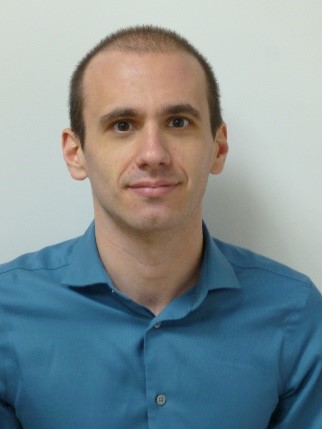May 26, 2015
As part of an ongoing ASAP research project titled "Biomechanics Models for an Aging Driver," ASAP hosted a seminar at the FSU's AeroPupolsion Mechatronics and Energy (AME) facility in the Conference Room 211 on May 26, 2015. The speaker was David Poulard, Ph.D., a Research Associate at the University of Virginia's Center for Applied Biomechanics. The seminar was successful and well attended by faculty and graduate students from the Departments of Mechanical Engineering, and Civil and Environmental Engineering at the FAMU-FSU College of Engineering. The seminar abstract and speaker's bio are presented below.
One of our ASAP Researchers, Dr. Lisa Spainhour recently participated in an outreach event at a local high school. The event was the third in a series of Super Science Saturdays, sponsored by Lincoln High School in Tallahassee, Florida. In an effort to encourage more students to take science classes in high school and consider careers in science, engineering, and technology, Lincoln invites students from their feeder middle schools to learn about a science field, and compete against one another in a related event.
Dr. Spainhour worked with Lincoln science teachers to teach the students about transportation engineering. Previous events were related to meteorology and forensics. Dr. Spainhour gave a presentation about bridge design and transportation safety, and then mentored the teams as they designed and built balsa bridges.
Garit Poire and Scott Kell, both civil engineering students at FAMU-FSU, attended the event and mentored the student design teams. Students from Swift Creek and Montford Middle Schools participated in the event, and a team from Swift Creek took home the trophy for building the bridge with the highest strength-to-weight ratio. The following pictures were taken at the event.

Abstract
Finite element human body models (HBMs) offer some promising advantages as advanced injury prediction tools in passive safety. The level of detail in thoracic and HBMs has increased due to the availability of detailed anatomical information and increased computing power. Significant advances have also been made in material constitutive models, their implementation in finite element codes, and the required data used to define and validate them. Imaging techniques such as CT or MRI are typically used to generate an anatomically correct geometry. Proper characterization of the material properties usually presents a challenge because the biological tissues are usually anisotropic, with a typical nonlinear viscoelastic behavior. Validation is a crucial stage in model development as it is mandatory to demonstrate model biofidelity. This should be differentiated from the model calibration which consists of adjusting certain model parameters to improve the response of the model. Model validation should be performed on a continuous basis, with an increased level of complexity with each step.
The seminar first introduced some background in injury biomechanics including anatomy, injury classification, injury mechanism and injury criteria. It then reviewed finite element human body models: development, evaluation, personalization, choice of approval criteria and proper use of experimental corridors.
Bio
Dr. David Poulard earned a PhD in Mechanical engineer from the University of Lyon in 2012, his dissertation focused on age and morphotype influence on thoracic mechanical response in frontal impacts using personalized human body FE models. He is currently a postdoctoral researcher at the Center for Applied Biomechanics at the University of Virginia where he develops and evaluates occupant and pedestrian finite element human body models used in passive safety.